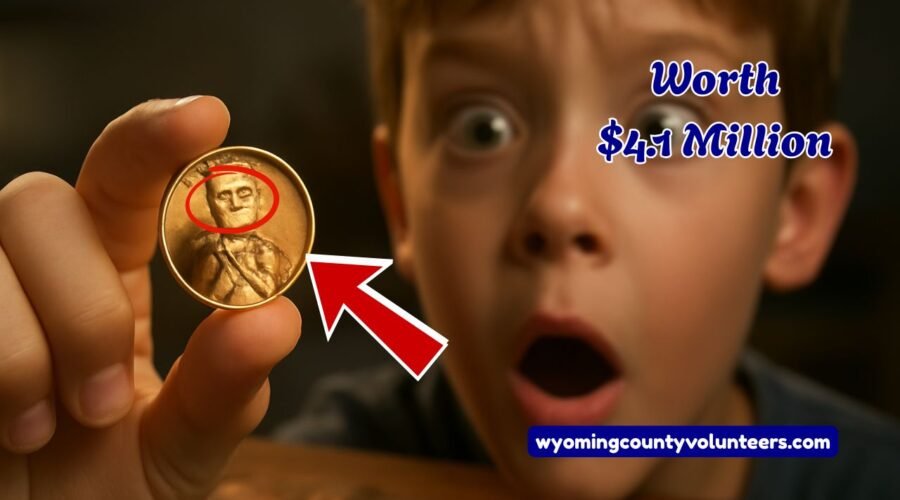Lincoln Wheat Penny – The $4.1 Million Coin You Could Find In Spare Change
Imagine finding a penny in your old coin jar that could make you a millionaire. Sounds crazy, right? That is the magic of the Lincoln Wheat Penny. This coin, first made in 1909, has become one of the most valuable collectibles in the United States.
While most pennies are worth just one cent, some rare Wheat Pennies have sold for thousands—or even millions. The highest price ever recorded for one was a mind-blowing $4.1 million.
In this article, we’ll explore the history of the Lincoln Wheat Penny, what makes certain versions rare, and how you might find one yourself.
What Is the Lincoln Wheat Penny?
The Lincoln Wheat Penny was first minted in 1909 to celebrate the 100th birthday of President Abraham Lincoln.
- Front (obverse): Lincoln’s profile.
- Back (reverse): Two wheat stalks around the words “One Cent.”
This design was created by Victor David Brenner. Unlike earlier U.S. coins, it honored a real American hero. Billions of Wheat Pennies were made between 1909 and 1958, but the special ones are the real treasure.
A Short History
- 1909: First release to honor Lincoln’s centennial.
- Mint marks: Philadelphia (no mark), Denver (D), San Francisco (S).
- Controversy: Brenner’s “VDB” initials were removed in 1918 after criticism, then later returned in smaller size.
- 1943: World War II caused a metal shortage. Most pennies were made from steel, but a few copper pennies slipped through. Those rare 1943 copper coins are now worth a fortune.
Why Collectors Love the Wheat Penny
Even though we live in a digital money world, the Lincoln Wheat Penny remains special because:
- It connects us to Lincoln’s legacy.
- It reminds us of American history, especially during wartime.
- It gives collectors and investors a chance to own a piece of the past.
Most Wheat Pennies sell for just a few cents, but rare dates and minting errors can sell for huge sums.
Rare Lincoln Wheat Pennies and Values
Here’s a simple table of key dates and their value:
| Year & Variety | Why It’s Rare | Estimated Value |
|---|---|---|
| 1909-S VDB | First year with initials | $700+ |
| 1914-D | Low mintage | $150+ |
| 1943 Bronze | WWII copper error | $300,000+ |
| 1955 Doubled Die | Error with doubled design | $1,000+ |
| 1958 | Last Wheat Penny year | $1+ |
Fun fact: Only about 20 copper 1943 pennies exist. One of them sold for $4.1 million at auction.
Tips for Finding Your Own Wheat Penny
If you want to search for one, here’s where to start:
- Old coin jars or savings tins.
- Estate sales and flea markets.
- Bank rolls that may still hold older coins.
- Look for coins minted before 1959 (those are all Wheat Pennies).
Collectors also join clubs, attend coin shows, or trade online. Some people started with just one penny and ended up with a valuable collection.
Pros and Cons of Collecting
| Aspect | Pros | Cons |
|---|---|---|
| Accessibility | Cheap to start (under $1) | Many fakes exist |
| History | Connects to Lincoln’s era | Older coins wear easily |
| Investment | Rare coins gain high value | Common ones stay cheap |
Collector Tips
- Use a magnifying glass to check dates and mint marks.
- Do a magnet test on 1943 pennies—steel sticks, copper does not.
- Store coins in proper albums to avoid damage.
- Have rare coins graded by PCGS or NGC to prove authenticity.
The Lincoln Wheat Penny is proof that history can hide in plain sight. From its first minting in 1909 to a record sale of $4.1 million, this tiny coin has amazed collectors for over a century. It’s not just a penny—it’s a reminder that even the smallest items can hold great value.
So, the next time you come across old coins, take a closer look. You might be holding a piece of history worth far more than you imagine.
FAQs
What is the rarest Lincoln Wheat Penny?
The 1943-D Bronze Penny is the rarest. Only one is confirmed, and it is worth millions.
How can I check if my Wheat Penny is valuable?
Look at the date, mint mark, and condition. Errors like double dies or wrong metals make them valuable.
Are Wheat Pennies still legal money?
Yes, they are still legal tender, but collectors will pay much more than face value.


Leave a Reply